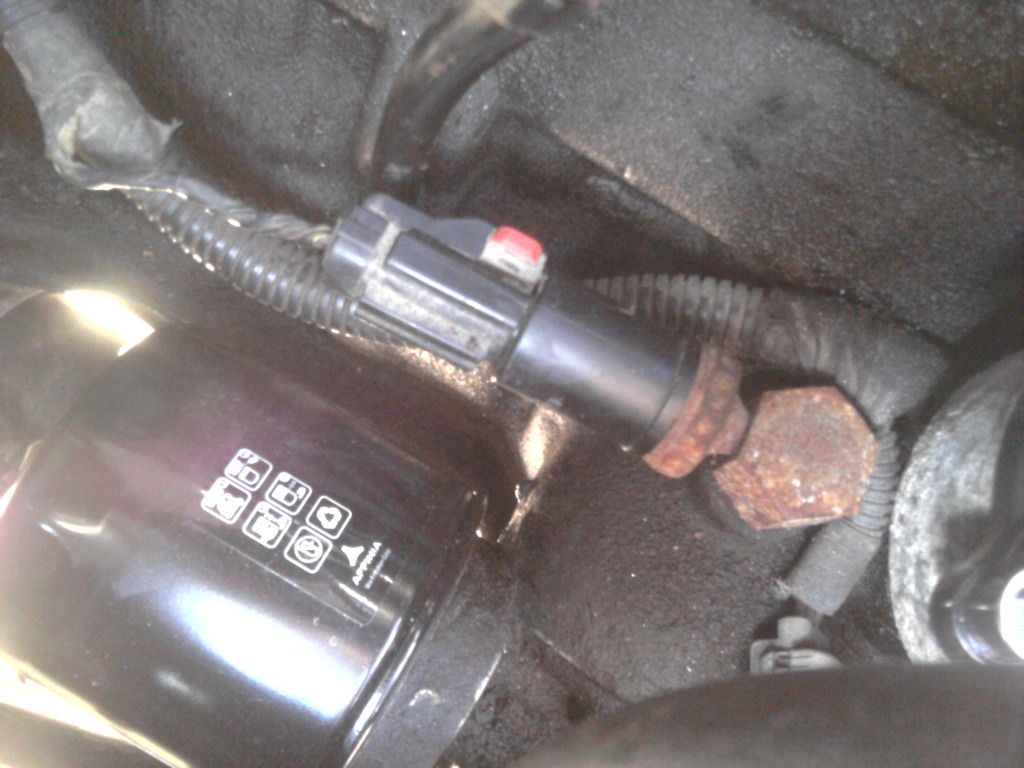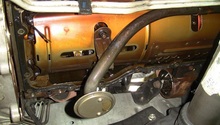Jeep Cherokee 1984-2001: Why is My Oil Light Flashing?
A flashing oil light on the instrument cluster can be a major cause for concern. Jeep XJ Cherokee models use this light to indicate to the driver that there is little to no oil pressure, and the engine should be immediately shut off until the problem is diagnosed.
This article applies to the Jeep Cherokee XJ (1984-2001).
Any time the oil pressure gauge drops or fluctuates wildly, it is a cause for concern and should not be taken lightly. Engine oil pressure is monitored by an oil pressure sending unit that informs the driver of the oil pressure via the dash gauge. In the event that that oil pressure drops to an extremely low level, the engine oil light will illuminate and the engine should be shut off immediately to avoid damage. XJ Jeep Cherokees, as well as many other Jeep models of the time, are known to have their oil pressure sending units fail and falsely indicate that there is no engine oil pressure. That being said, it is important to properly diagnose an illuminated or flashing engine oil light to ensure that the car does have adequate oil and the oil is properly circulating through the engine. This article will outline the steps involved in determining if your XJ Jeep Cherokee has proper engine oil pressure and where the potential problem illuminating your oil light may lay.

Materials Needed
- Mechanical oil pressure gauge kit
- Pliers or 1-1/8" wrench
- Soldering iron/wire strippers/connectors/wire crimpers (in the case of damaged wiring)
Step 1 – Check engine oil level
Any time an oil indicator light comes on, the first step involves checking the engine oil level. An extremely low oil level will prevent the oil pump from picking up oil out of the sump and circulating it through the engine. A low oil level can allow for oil pressure fluctuations, or no oil pressure at all. In either case, severe engine damage can occur if the vehicle is driven with a low engine oil level.

Check the engine oil level with the vehicle sitting on a level surface. If the engine has been running, allow 5-10 minutes for the oil to settle in the oil pan before checking. Remove the engine oil dipstick and inspect the oil level. If the oil fails to show, or is extremely low on the dipstick, add oil until the proper oil level is achieved. If the oil level is just below the "Add" mark on the dipstick, adding 1 quart of oil will typically achieve the proper oil level.

Pro Tip
Ensure you are using the correct oil viscosity for your engine. An oil that is too thin may not provide adequate oil pressure and trigger the dash oil light. Refer to your owner's manual for oil recommendations.
If the oil level is correct on the dipstick, proceed to Step 2.
Step 2 – Check oil pressure with mechanical gauge
Checking the oil pressure with a mechanical gauge can help quickly identify if the problem lays with a faulty oil pressure sending unit, or is caused by engine component wear. Engine oil pressure gauge kits can typically be purchased or rented at local auto parts stores.
- Locate the engine oil pressure sending unit. It is typically next to the engine oil filter and is screwed into the engine block. If you find that the wiring to the sending unit is disconnected or damaged, reconnect or repair the wiring and start the vehicle to check for proper oil pressure. If the oil pressure light is still on, shut the engine off and proceed to the next step.

- Disconnect the wiring to the sending unit. Remove the sending unit. It is typically removable by hand, but can be loosened with a 1-1/8" wrench or pliers if overly tight.
- The thread size for the sending unit is 1/4" NPT, so be sure your mechanical gauge has an adapter to fit the threads. Install the mechanical gauge into the engine block.

- Start the engine and monitor the oil pressure on the mechanical gauge. If there is no oil pressure, immediately shut the engine off. If there is oil pressure present, allow the engine to reach operating temperature while continuing to monitor the gauge. With the engine hot, the oil pressure should read no lower than 13 psi at idle and approximately 35-75 at engines speeds upwards of 1,600 rpm.
- If the oil pressure reads lower than the above values or at zero, it is possible that the crankshaft main bearings are worn or the oil pump has failed. In either case, engine disassembly will be required for repairs.
- If the oil pressure reads within the above values, the oil pressure sending unit is not working properly and should be replaced.

Related Discussions
- Oil Pressure Issue 2001 XJ - Cherokeeforum.com
- Oil Pressure Drops at Idle and Changing Oil Pump - Cherokeeforum.com
- Oil Pressure Sending Unit - Cherokeeforum.com
- Blinking CEL, Car Running Weird - Cherokeeforum.com
- Oil Light Flickering - Cherokeeforum.com






